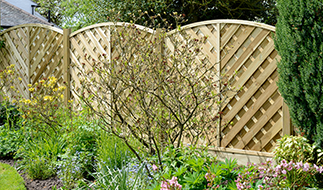4 Things You Really Should Consider When Installing Garden or Driveway Gates
- Gates
- Railings
- Fencing
- Accessories
& Fitting- Sheds
& Storage- Garden Structures
- Design
& StyleMetal Gates & Railings- Info
& HelpIf you are thinking about installing a new gate to the exterior of your property it is important to consider not only the size and design that you would like but also the structure or area where they will be installed.
This is down to the fact that whilst the installation of a new gate is relatively simple it may not always be a smooth process if you fail to take into consideration the strength, condition and suitability of the surface where you intend to mount the hinges or fixing brackets.
Here we highlight the 4 things we think you look at prior to committing to any purchase or beginning any installation work.
Condition of Existing Brick Walls or Pillars
Unless you are installing a gate to a new wall or pillar then a common problem associated with this type of structure is a poor overall condition of the brickwork. This is down to the fact that they are often fully exposed to the elements meaning rain and frost will over time split, crack or crumble the bricks leading to a loss of strength.
For this reason where a gate is to be installed to any existing brickwork it is important to check the overall condition of it to ensure it will provide an adequate means on support. With some metal garden gates being around 50kg in weight ( or 100-250kg for some of our our heavy duty double gates) a large amount of additional strain will be placed on the wall at the point where the hinges are mounted and for this reason it is essential to check these points prior to adding any additional loads to the wall. The last thing you want to do is fit the gate only to find the brickwork fails within a day.


If you are unsure what is deemed as “suitable” we suggest you ask a local builder to make an assessment or for larger spans it may be necessary to employ the services of a structural engineer.
What if the bricks are deemed unsuitable? For installation locations that no longer have a suitable support surface available the bricks should be removed and replaced with new ones and be bedded into a suitable mortar mix or alternatively the use of metal posts may be an easier alternative as these can help spread the load over a wider area.
Mortar Beds and Pointing
In addition to the actual bricks themselves you will also need to consider the condition of the mortar beds as these are basically the glue that will hold the wall together. Commonly you will find old walls suffer quite badly from a phenomenon know as “freeze and thaw effect”. In simple terms this comes about when water is absorbed by the mortar (during periods of rain) and freezes. The freezing process expands the water and will over time lead to a degeneration of the mortar and a weakening of the structure as a whole. An early sign of this is small parts of pointing blown away from the mortar beds. Should any areas like this be found they the mortar should be cut out with the use of a plugging chisel to an appropriate depth then be repointed with a suitable mix of sand and cement.
Tree Roots
The threat of tree roots and the damage they can cause to boundary walls and other types of brickwork should not be underestimated. Over time, as the tree roots grow they may undermine foundations as they search for additional growth space. In many instances this means the roots will push the foundations of the wall leading to movement of the brickwork. In many cases this is down to poor aforethought where a wall is built to close to a tree in the first place however the most common cause is the homeowner themselves. They plant a tree giving little thought to how it will grown and over time results in defects in brick structures. With this in mind pay close attention to the condition of your wall or pillars if a tree is in the near vicinity.
What are the signs of tree root damage? The most common visible signs of a problem will be a wall leaning severely out of plumb or areas where the brickwork has been forced up resulting in a wall that is no longer level. In some instances cracking will be present in the brickwork where this movement has occurred.
In most instances unless the tree is removed the problem will only get worse over time so if you have a wall showing these symptoms be very wary of installing heavy gates to them as this additional weight may cause the structure to fail completely.
Solution? Remove the tree and rebuild the walls of install metal post set into the ground with concreate.
Vehicle Damage
Masonry structures located close to a road or the entrance of the driveway are susceptible to damage from vehicles and as such unless they are properly repaired are an accident waiting to happen if you attach heavy gates onto them and believe it or not the damage may not always be noticeable. For example if the impact has been low down it may have fractured the mortar beds beneath the ground leaving it balanced precariously. For this reason, wherever possible we recommend you hang large gates off metal posts set into the ground.
Whilst it is important to consider the 4 topics we have discussed above there can be lots of other problematic areas you need to consider when installing new gates. As such this article is intended to provide general guidance. If you are in any doubt as to the suitability of the structure you want to hang the gates off we suggest you speak with a professional building company, local surveyor or structural engineer.
- Railings



